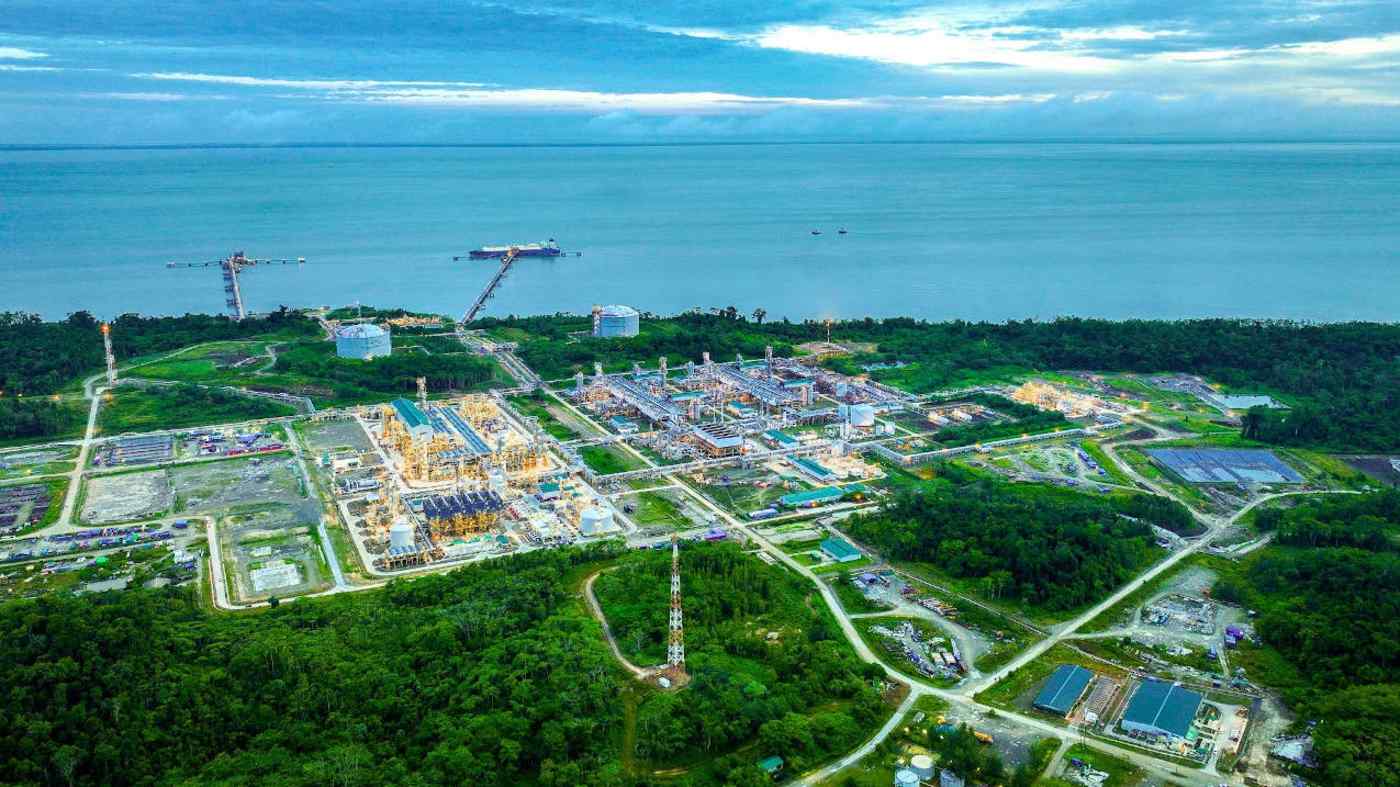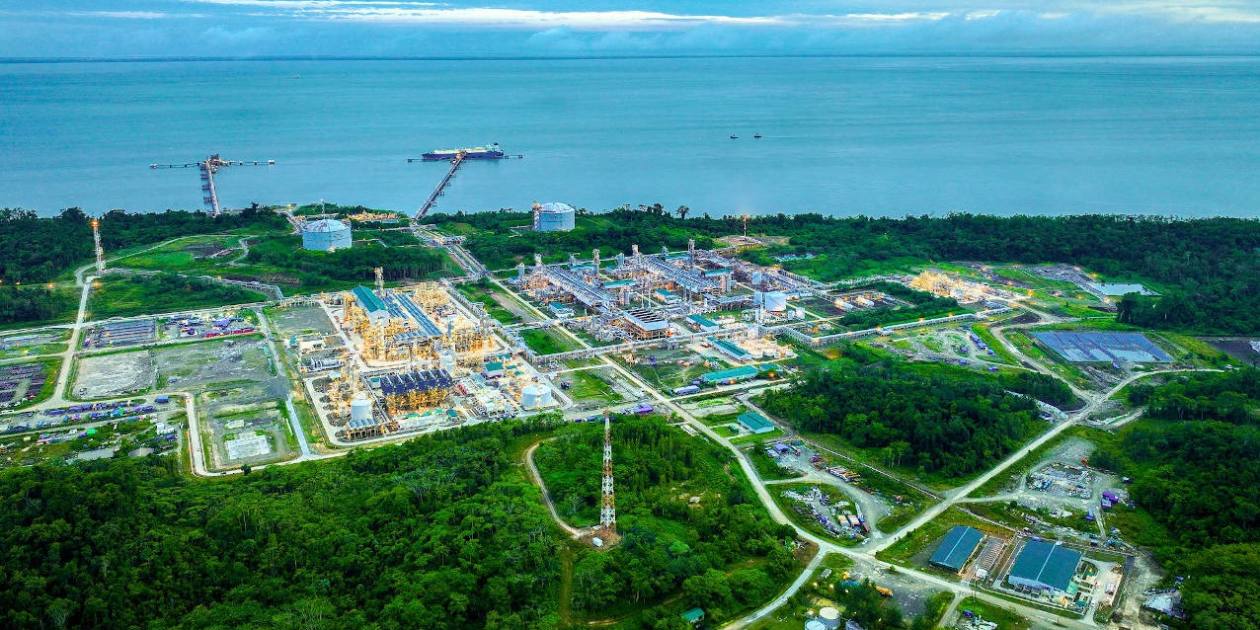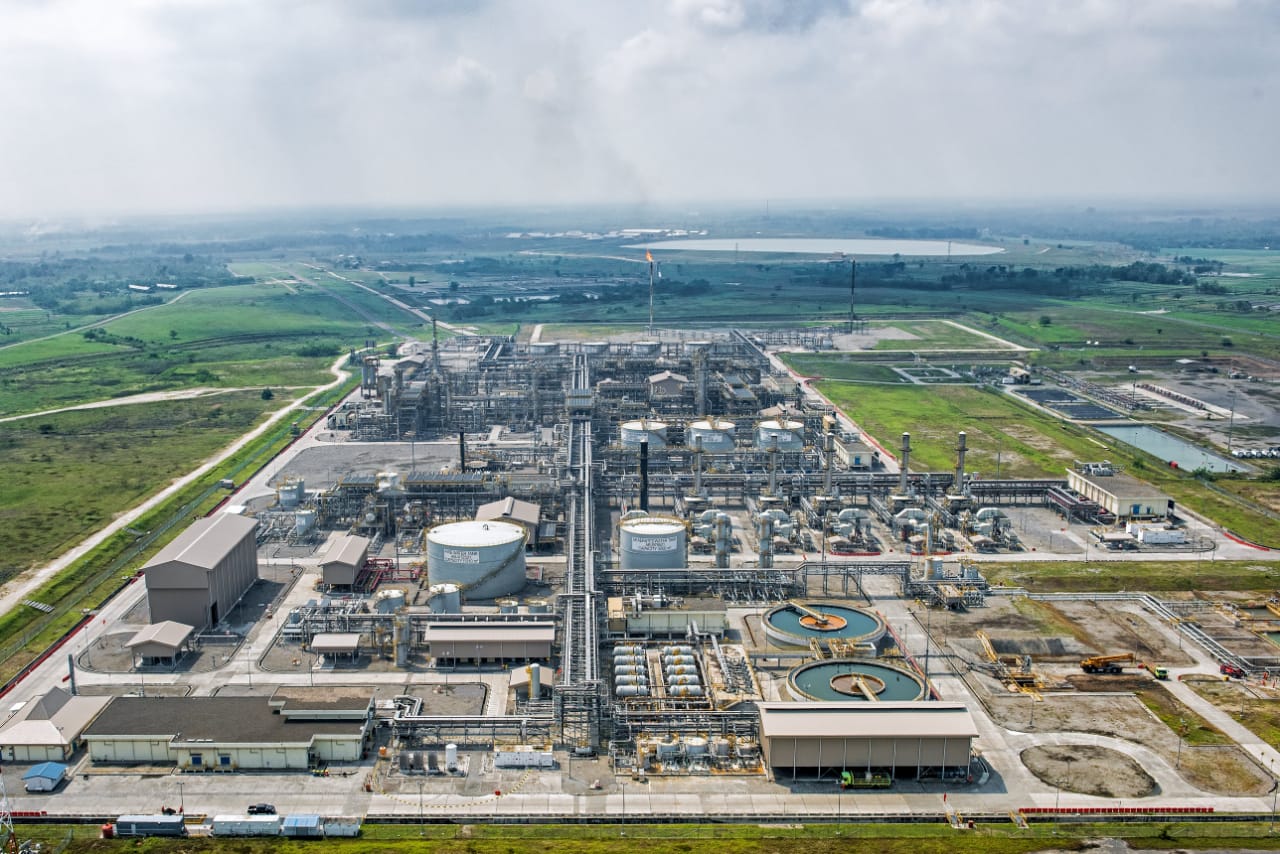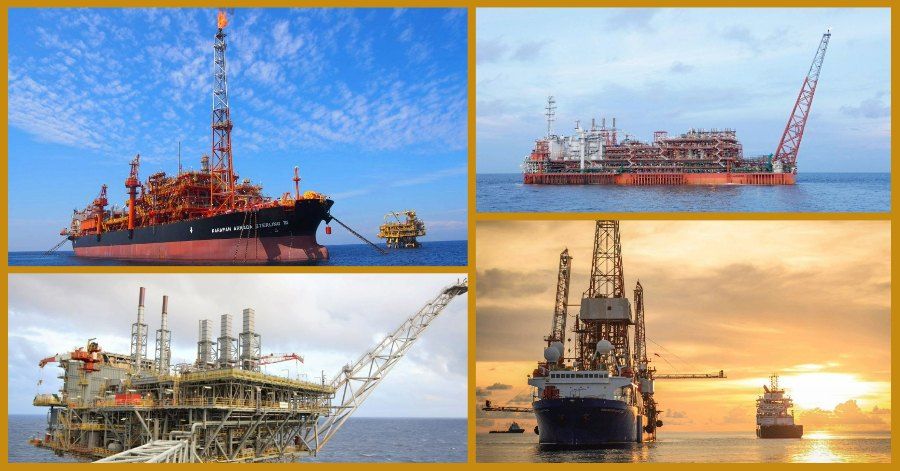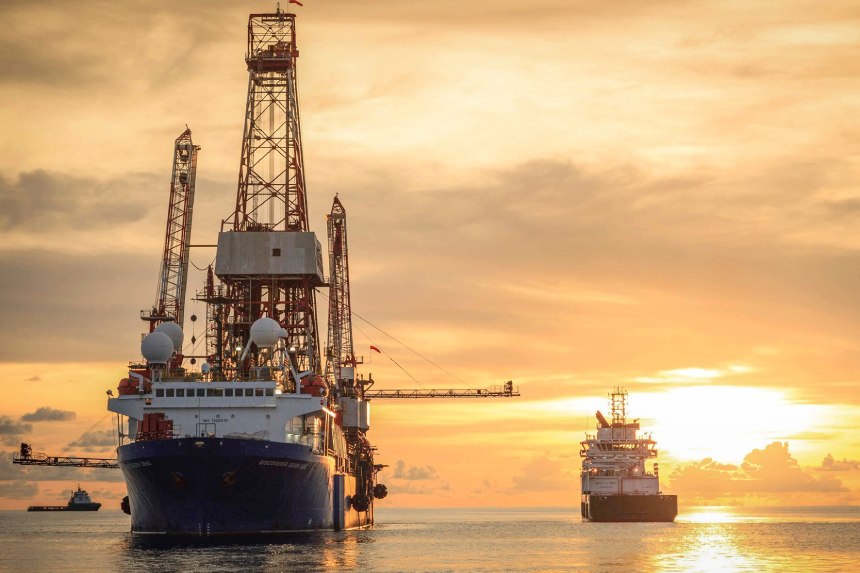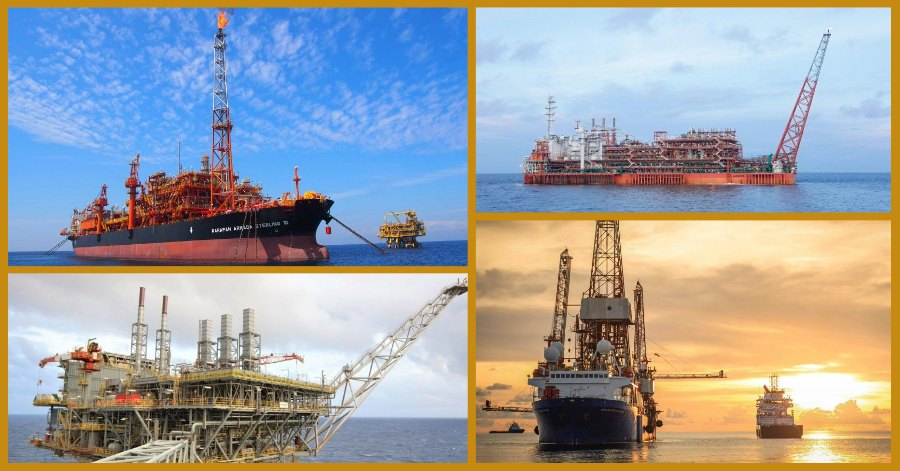COLUMN | Indonesia: Where King Coal will be dethroned by gas? ENI and Genting move towards production, Inpex progresses Abadi LNG, and Harbour explores further in the Andaman Sea [Offshore Accounts]
By
Hieronymus Bosch - October 26, 2023.
FacebookTwitter
LinkedIn
In the ten months since we last ran a
country feature on Indonesia, a lot has happened in the world’s most populous Muslim-majority country, which also happens to be the world’s third largest democracy,
and the world’s biggest coal exporter by volume.
As an aside, China is the world’s largest coal producer, but uses nearly all of its production domestically.
Indonesia has had a great decade, with annual economic growth averaging around five per cent, and another five per cent expected this year, whilst in September the country’s annual inflation rate was only 2.3 per cent.
Now, ENI has made a large gas discovery off Borneo, and it intends to fast-track to production, while the Indonesian government has given approval to the country’s first floating liquefied natural gas (FLNG) project, with a second in the pipeline, and a giant LNG project in the remote south of the country, abutting the Australian maritime boundary, cleared a crucial regulatory roadblock.
Coal versus LNG – LNG wins every time
LNG produces approximately half the amounts of CO2 in relation to the energy its produces when burnt, compared to coal, according to a
summary of research on Reuters. Additionally, coal-fired power plants emit a whole host of nasty particulates, heavy metals (including mercury), and other toxins, as well as CO2. Ending coal burning would save millions of lives in Asia, especially in China, India and Indonesia, where the health impact of smog and pollutants from coal plants—including asthma attacks, bronchitis, heart attacks and lung diseases—causes significant premature mortality.
So, our position is that phasing out coal and replacing it with gas has immediate and tangible benefits, as the Germans have discovered by
doing the opposite. Increased LNG and gas usage also supports a bullish case for offshore drilling and investment in the near and medium term.
This is a transformation that Indonesia looks set to make in the coming decades.
Just Energy in Jakarta – just stop coal with foreign cash
Foreign governments are keen to assist with the transition.
Indonesia is now in the process of finalising a “
Just Energy Transition Partnership” (JETP), a plan to wean the country off coal consumption. The JETP offers US$20 billion of incentives from grants from rich countries and a mix of concessional and market-rate loans, plus private investment to shut down coal-fired power stations and reduce carbon emissions. Under the plan, Indonesia will agree to set targets to cap carbon emissions from its power sector, and it will pledge to triple the share of renewable energy in the country’s electricity generation portfolio by 2030.
US$10 billion of the JETPP funds will come from the governments of a group of developed countries, headed by the US and Japan, the other G7 nations, and Denmark and Norway. The other US$10 billion will come from the financial institutions that are part of the
Glasgow Financial Alliance for Net Zero, including leading insurers, banks and investment managers, such as Blackrock and Allianz. If approved, the Indonesian scheme will be the second JETP investment plan after South Africa’s US$8.5 billion programme.
South Africa is another state dependent on coal for much of its electricity generation, via the corrupt and broken state monopoly Eskom. South Africa would do well to look at Indonesia’s growing investment in offshore exploration rather than endlessly blocking drilling the in courts amid scaremongering about the risks. Only last week,
a court case over whether to allow Shell to explore there was delayed until next year, and Total’s exploration discoveries, Brulpadda (made in 2018) and Luiperd (made in 2020), remain undeveloped even though the
French supermajor has estimated that there are 4.5 billion cubic metres of gas reserves in place. Now climate activists hope that Indonesia will set a course that other developing countries will follow.
Like South Africa, Indonesia faces challenges to wean itself off coal. Indonesia originally planned to set its target for peak annual CO2 emissions at 290 megatonnes, but it quickly became clear that the target was not realistic. As it turned out, that there was far more captive, privately-owned, coal-fired power plant capacity than previously thought, and a lot of new ones planned. So, the target was revised upwards.
Environment swings back to gas
It is in this favourable political environment that a number of Indonesian gas projects are finally moving ahead. However, the country’s glacial bureaucracy and vested interests still pose a challenge for operators in the exploration and production sector.
There are a number of exciting prospects that will stimulate offshore drilling demand, and many of these projects have been stalled for decades. With the country supporting a number of major fabrication yards and shipyards especially in the Riau Archipelago near Singapore, offshore development projects offer jobs in-country.
Shell sells Abadi to Petronas and Pertamina
Drilling activities at the Abadi gas field (Photo: Inpex Australia)
Last Wednesday, Shell finally confirmed that it had completed its sale of its 35 per cent sale of the Masela block in the Arafura Sea, which includes the long-delayed Abadi LNG project. Malaysia’s Petronas and Indonesian state energy company Pertamina have taken 15 per cent and 20 per cent shares in the block, respectively. The two companies paid Shell a total of US$325 million in cash while an additional US$325 million will be paid when the final investment decision is finally taken on the Abadi LNG project.
Earlier this year, Inpex submitted its latest Plan of Development for the project to the Indonesian government. This plan included carbon capture and storage (CCS) measures for the first time. Expect more and more LNG projects to include a CCS component, as simply venting CO2 is no longer acceptable.
The sale of the Shell stake closed after the Indonesian Ministry of Energy and Mineral Resources approved it, and this should end a decade of stalemate after the government repeatedly refused to countenance an FLNG development, preferring a higher cost, but higher local content, plan for a shore-based LNG plant on a remote island, similar to BP’s Tangguh LNG plant in Irian Jaya in the east of Indonesia. BP recently completed the commissioning of a third LNG train at Tangguh and shipped the first LNG cargo from the new production train last week. BP is also looking at a CCS project at Tangguh, and BP and its partners claim the reservoir has 1.8 gigatonnes of CO2 in potential carbon storage capacity, with the ability to handle both domestic and international emissions.
Inpex remains the operator of the Masela block and holds a 65 per cent interest. The three Abadi partners are now expected to approve the project in the next two years, and this will involve spending around US$20 billion to build a 9.5 million tonnes per annum onshore LNG plant on Tanimbar Island, connected to the field by a technically challenging 180-kilometre pipeline that will cross a 3,000-metre-deep trench. An additional 150 million cubic feet (4.25 million cubic metres) of gas per day will be distributed by pipeline to the local market in Maluku, one of Indonesia’s poorest provinces.
This should have been approved ten years ago and it should have been an FLNG, but at least there is now light at the end of the tunnel.
ENI moves quickly at Geng North
Earlier this year,
as we expected, ENI bought out Chevron’s interests in the long-stalled and undeveloped IDD Phase Two deepwater gas fields off Kalimantan. Now Eni is planning to develop its own Maha field in the Merakes block and to fast-track the development of its recent, large Geng North gas discovery in the North Ganal block close by. The Geng North well was drilled in 1,947 metres of water by the drillship
West Capella last month.
The onshore Bontang LNG facility in East Kalimantan province remains under-utilised, so there is ample opportunity to pipe in additional gas for export quickly and easily. Bontang is currently producing only six million tonnes of LNG per year, about 70 per cent of its current capacity and only half its total capacity, as two additional production trains are also mothballed, and could be brought back online with investment if required.
The discovery at Geng North provides the Italian company with an estimated five trillion cubic feet (141.5 billion cubic metres) of gas reserves and ENI plans to achieve first gas from the field in 2027, after it confirms the final investment decision next year.
New FPU for a North Hub
ENI is planning to build a new floating production (FPU) unit to act as a hub for the production, not only of the Geng North reserves but also some of the currently stranded IDD Rapak gasfield that it acquired from Chevron.
ENI’s newbuild FPU has a projected gas processing capacity of between 800 million and one billion cubic feet (22.6 million and 28.3 million cubic metres) per day, and will be dubbed the North Hub. The Geng North discovery is also wet gas, so the FPU will also need condensate production capacity, estimated at between 50,000 and 60,000 barrels per day, as well as storage.
Jangkrik is the model
The Jangkrik
floating production unit in Indonesian waters (Photo: Eni)
Also in that area, ENI already operates the
Jangkrik FPU, which was built by Saipem at its Karimun yard in Indonesia. The FPU came into production in 2017, piping gas to Bongtang LNG. The Gendalo-Gehem gas fields at the heart of the IDD purchase have proven reserves of around two trillion cubic feet (56.63 billion cubic metres) of gas, plus condensate, located in 2,000 metres of water. ENI is planning to maintain production at Jengkrik and feedstock into Bongtang by first tying back its own Maha and Merakes East gas discoveries to the FPU. It will then add-in gas from Gendalo and Gehem as the Merakes reservoirs deplete, thus ensuring continuity of production for Bontang for the next quarter century.
Bargain rig from Vantage
ENI has tendered a 540-day contract for a deepwater drilling rig for its Maha development and further exploration in the nearby Kutei Basin. Sources believe that Vantage Drilling will be the successful bidder with
Platinum Explorer at a dismal day rate below US$400,000. Vantage only operates two drillships and faces cashflow problems when the rig
redelivers from ONGC in India early next year. Vantage has a long relationship with ENI: it currently manages
West Capella and has one of its own jackups on hire to ENI in Morocco.
Pareto has posited that this low award may herald what it dubbed a “mid-cycle slowdown” for the deepwater drillers. I disagree. Vantage has always been a marginal operator that only avoided possible liquidation in the downcycle when it won a
US$620 million lawsuit against Petrobras in 2019 and received an unprecedented cash influx from its courtroom victory.
I believe that in 2024, somebody will buy Vantage, probably in an all-stock transaction that will provide its shareholders the liquidity their over-the-counter traded stock currently lacks.
For Indonesia, the Geng North discovery is great news as it secures large new reserves, enables the continued viability of the Bontang LNG plant, and heightens investor interest in the country’s exploration potential.
Harbour Energy also drilling off Sumatra
Photo: Harbour Energy
Across the country in the Andaman Sea off Aceh, Sumatra, where co-incidentally there is another under-utilised LNG plant, Arun,
West Capella is now drilling a multi-well campaign for Harbour Energy, the British-listed explorer. This is a follow-on to the 2022 Timpan gas discovery on Harbour’s Andaman II block, which added 80 million barrels of oil equivalent for the company.
The campaign, which includes four firm wells and one optional well, aims to demonstrate the commercial viability of a development on Andaman II and to test the extension of the play into South Andaman. The first well will target the Layaran prospect on Mubadala’s operated South Andaman licence (where Harbour holds a 20 per cent interest) followed by drilling the Halwa and Gayo prospects on Andaman II block, where Harbour holds 40 per cent and is the operator. The rig will then return to South Andaman to drill a fourth well, the location of which will be confirmed following the outcome at Layaran.
Elsewhere in Indonesia, Harbour is working to progress the approved field development plan for its Tuna discovery in the Natuna Sea. Unfortunately, it is partnered with a Russian company that is subject to EU/UK sanctions.
Harbour says it hopes a potential final investment decision on Tuna will be made in 2025.
Genting gets first FLNG over the line
Whilst Inpex and Shell were denied the chance to use an FLNG facility to develop Abadi, Malaysia’s Genting Oil and Gas did receive permission to develop the onshore Kasuri block in Irian Jaya close to BP’s Tangguh LNG plant on Bintuni Bay, as confirmed
earlier this year. The field was too small to develop as a standalone LNG plant, with only two trillion cubic feet (56.6 billion cubic metres) of gas reserves, and BP has no capacity at its Tangguh plant to process gas from Genting. BP’s Tangguh gas reserves are nine times larger, at 18 trillion cubic feet (509.7 billion cubic metres).
Therefore, the Ministry of Energy and Mineral Resources approved Genting supplying 230 million cubic feet (MCF) (6.5 million cubic metres) of gas a day to a leased FLNG unit moored inshore, on the condition that it also sends gas to a newly-built US$1.5 billion ammonia and urea plant the state-owned fertiliser company Pupuk Kalimantan Timur will construct on the south coast of Bintuni Bay in Irian Jaya. Indonesia is the world’s seventh largest
fertiliser importer, and this project will reduce its import dependency on a product for which it paid US$2 billion to foreign suppliers in 2021.
The tardy timelines for project sanction, which we have criticised in the past in Jakarta, also blighted the Genting project. The Indonesian authorities took eleven years to approve the plan of development for the field and first gas is likely still another three years away.
Bumi Armada works on FLNG barge
Karapan Armada Sterling III
(Photo: Armada Gema Nusantara)
Bumi Armada has also been working with Indonesia-based partners on an FLNG barge for deployment in Madura field in shallow water off Java, according to announcements to the
Malaysian stock exchange last month.
The Malaysian floating production operator said that its FLNG barge has received in-principle approval from the American Bureau of Shipping and its system allowed benign water LNG projects to be brought to market “in a fast-track, cost-effective, flexible and reliable manner”.
Bumi Armada is working in partnership with Indonesia’s Pertamina International Shipping and local contractor Davenergy Mulia Perkasa on the project, which features a newbuild barge where the modularised liquefaction unit is placed, whilst existing LNG carriers are used for storage of the LNG. Bumi Armada said that the concept means that operators can take a phased approach to field development, deploying parallel liquefaction units in line with capacity requirements for the monetisation of their gas, thus eliminating the need for large and expensive onshore infrastructure.
“This technology is a testament to our strong commitment towards providing the best solutions that unlock the pathway to achieve net zero by 2050, which is in Bumi Armada’s decarbonisation agenda,” Bumi Armada chief executive Gary Christenson said.
Bumi Armada currently operates an FLNG terminal in Malta and the floating production storage and offloading (FPSO) unit
Karapan Armada Sterling III on CNOOC and Husky Energy’s Madura BD field. This FPSO uses an amine recovery system to extract hydrogen sulphide from the gas it produces. The recovery system is similar to the amine systems used for many CO2 capture-recovery systems.
Modular, small-scale gas production could unlock a lot of shallow-water stranded gas reserves in Indonesia.
Medco moves on Paus Biru after pause
Also off Java, Indonesian-listed oil producer Medco Energi is moving towards the final investment decision on its Paus Biru gas field development on the Sampang block.
Upstream reported that Medco is proceeding with negotiations with the Indonesian government to extend its production rights over the Sampang PSC beyond the existing 2027 contract expiry date. Medco and its partners are hoping to receive a 20-year extension of the offshore production sharing contract, which would allow them to invest in the development of the Paus Biru gasfield.
Amanda Battersby reported that the field development is based around a single well and a new wellhead platform at the Paus Biru field, with a 27-kilometre subsea pipeline connecting the well to existing production infrastructure at the Oyong field in the same block. The gas would then be piped from the Oyong platform using an existing pipeline to the existing onshore production facilities operated by Medco and its partners.
Medco hopes that production at Paus Biru will begin in 2025 at a rate of between 20 million and 25 million cubic feet (566 million and 707 million cubic metres) per day. More jackup rig work there.
Politics might derail the decarbonisation process
Indonesia will hold its next general election on February 14 next year, and President Joko Widodo, known by the nickname Jokowi, will step down after finishing his second term. The successful implementation of the JETP will thus rely on his successor. Jokowi has enjoyed extraordinary popularity, with a recent opinion poll giving him an approval rating at a record high of 86 per cent.
Indonesian politics is an expensive business and President Widodo has taken measures—unfortunately—to reduce the power and independence of Indonesia’s Corruption Eradication Commission. His likely successor is his once-rival and now defence minister Prabowo Subianto, a former general who married the daughter of Indonesia’s longtime dictator general Suharto. Subianto will probably stand against Anies Baswedan, the former governor of Jakarta, and Ganjar Pranowo, the former governor of Central Java. The anti-corruption agency has opened corruption cases against Baswedan, who claims that the cases are being used as a political weapon against him.
Balancing decarbonisation against jobs and costs
Whoever wins the presidency in February will have to face the difficult task of ensuring that the country receives the foreign finance in the JETP agreement but without damaging employment or treading on the vested interests of the coal barons. Whereas deepwater exploration requires foreign investment, large amounts of capital and expertise, ripping coal out from underneath the jungles of Borneo requires political connections and little new technology or sophistication.
One of the biggest problems is that phasing out coal inevitably costs jobs. Coal mining is dirty, dangerous, and labour-intensive, whereas LNG is clean and safe, but even a large LNG plant with sufficient capacity to power millions of homes provides only a few thousand jobs at most. This contrasts with the Indonesian coal sector, which employs
a quarter of a million people, and coal royalties represent an important source of public revenue. This is especially in true the provinces of Kalimantan on the island of Borneo, where East Kalimantan province produces 48 per cent of Indonesia’s coal and South Kalimantan produces 32 per cent.
It is not reasonable to expect that these coal workers will suddenly retrain as wind turbine technicians or work on offshore FLNG ships or move to Batam to build anchor handlers for Vallianz.
Indonesia thus exemplifies the trade-off required even to move from one very polluting and dirty hydrocarbon energy source to another, let alone to majority generation from renewables. Changing the word’s energy systems is going to be expensive, difficult, and very time-consuming. Every country will face this challenge, but especially the number one and number two coal producers, China and India, and big exporters like Australia, South Africa, and Indonesia.
If Indonesia, with its massive population, cumbersome bureaucracy, and serious corruption problems can achieve the transition, then it can be done elsewhere. Still, we should not expect this to be quick and easy, no matter how optimistic those funding the JETP may be.
Finally, some good news from Shell about shore leave
It was excellent to read this
social media post from Shell’s Head of Shipping in Maritime for Asia-Pacific, who is also the current Chairman of OCIMF, the Oil Companies International Marine Forum, on the topic of shore leave for seafarers.
We agree that shore leave is an important part of life at sea and wish that other oil companies, terminal operators, and supply base managers would take such a sensible view and make it easier for seafarers visiting their facilities to go ashore. Nick Potter is correct that not only is shore leave beneficial for mental well-being and resilience, but it also supports attraction and retention of talent within the maritime industry simply by making life at sea more enjoyable and varied. We salute Shell for making sure that all the terminals they control ensure the active facilitation of shore leave and the presence of supportive organisations to assist seafarers calling there. Thank you!
Background reading – “carbon offsets”
In 2021, we criticised the preposterous notions that somehow carbon offsets can reduce emissions and contribute to “saving the planet” and that even cargoes of LNG could be made “carbon neutral” through the purchase of so-called carbon credits.
Now an in-depth piece by Heidi Blake for The New Yorker
entitled “
The Great Cash for Carbon Hustle”
shows the rotten heart of the carbon offset business – Swiss managers enriching themselves at leading corporate offset provider South Pole selling credits based on schemes in Zimbabwe where independent analysis shows that the carbon savings are simply not as great as the company claimed. It is a great piece of investigative journalism and one that hopefully former customers of South Pole will read and take action accordingly. The opening paragraph features the arresting line “Leading corporations, including Volkswagen, Gucci, Nestlé, Porsche, and Delta Air Lines, paid South Pole nearly a hundred million dollars for Kariba credits, allowing them to market goods or services as “carbon neutral…”
Why is Ms Blake doing the work? Could these corporate titans who were charging their customers a premium for “carbon neutral” products have not checked the basic maths of this “hustle” by South Pole? I am sure that word was selected for legal reasons by her editor, as my own language would have been considerably stronger.
My colleague Trevor Hollingsbee’s review of the Indonesian navy is here.
Read more about the Jangkrik gas field and its FPU here.
Related Posts
In the ten months since we last ran a country feature on Indonesia, a lot has happened in the world’s most populous Muslim-majority country, which also happens to be the world’s third largest democracy, and the world’s biggest coal exporter by volume. As an aside, China is the world’s largest...

www.bairdmaritime.com


